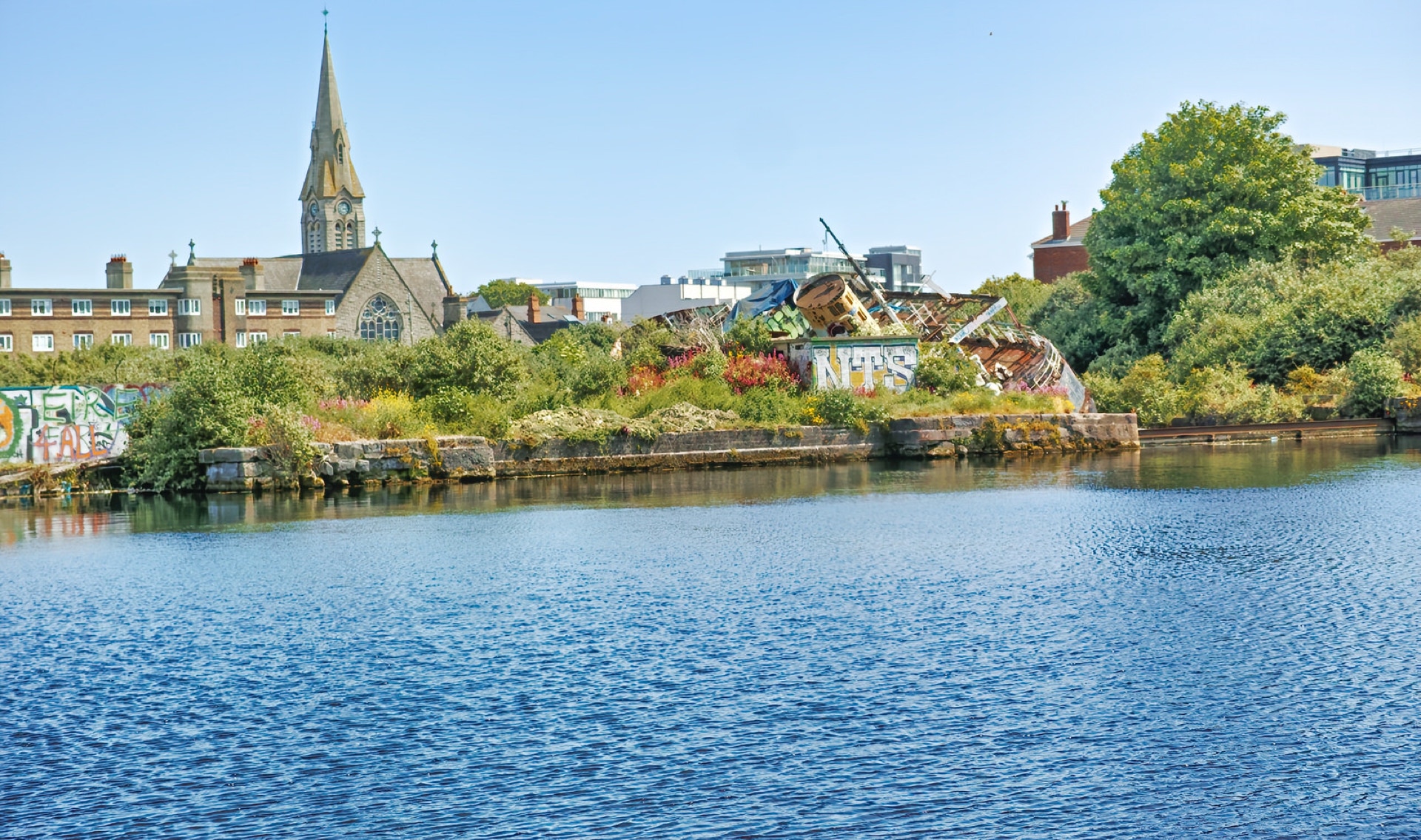MV NAOMH ÉANNA IS AN ABANDONED DECOMMISSIONED FERRY [I SUSPECT THAT THERE IS NO POSSIBILITY OF SAVING IT]
Naomh Éanna, Ireland’s oldest remaining merchant ship, completed in Liffey Dockyard in 1958. It is moored in the number 2 graving dock in Grand Canal Dock, Dublin Port.
MV Naomh Éanna is a decommissioned ferry which historically operated as the primary connection on the Galway to Aran Islands route for Córas Iompair Éireann (CIÉ) replacing the SS Dun Aengus.
The vessel featured in the 1996 film Michael Collins.
Despite plans to salvage the ship being mooted over the years, including making it part of a Maritime Quarter in Dublin, it has been left to languish in Dublin’s Grand Canal Dock.
Back in June 2017 I commented as follows: "The bad news is that this ship is due to be scrapped because the location is to be redeveloped and thus the ship must be removed." As you can se the ship is still visible but its condition is getting worse by the day.
In August of 1958, three months after entering service, she was among the ships to respond to the loss of KLM Flight 607-E.
KLM Flight 607-E, a Lockheed Super Constellation named Hugo de Groot and registered PH-LKM, was an international scheduled flight that crashed 180 kilometres (110 mi) northwest of Shannon Airport, Ireland on 14 August 1958. All ninety-one passengers and eight crew died in the accident, including six members of the Egyptian fencing team. The "E" in the flight number stood for the designation of being an extra economy class flight to match the increased seasonal tourist demand.
Flight 607-E departed Shannon at 03:05 UTC on the second leg of a transatlantic trip from Amsterdam to New York City with intermediate stops in Shannon and Gander, Newfoundland. Radio contact with the aircraft was lost at approximately 03:40 UTC; a rescue operation was launched which found light debris on the surface of the ocean approximately 180 kilometres (110 mi) west of Shannon. The remains of thirty-four of those on board were also recovered.
Due to the lack of evidence, Irish and Dutch investigators could not pinpoint a probable cause for the accident. They examined the possibility of a bomb, electrical failure, or pilot error, but believed that the most likely possibility was a catastrophic mechanical failure. The investigating Board believed the most likely cause of the accident to be a malfunctioning over-speeding outboard propeller caused by metal particles obstructing oil feed line regulator valves. The particles may have been formed by a gear that was damaged when the supercharger of the corresponding engine was accelerated (gear ratio shifted). The malfunctions of the propeller pitch might have provoked a flight disturbance and as a consequence the propeller may have sheared off.
